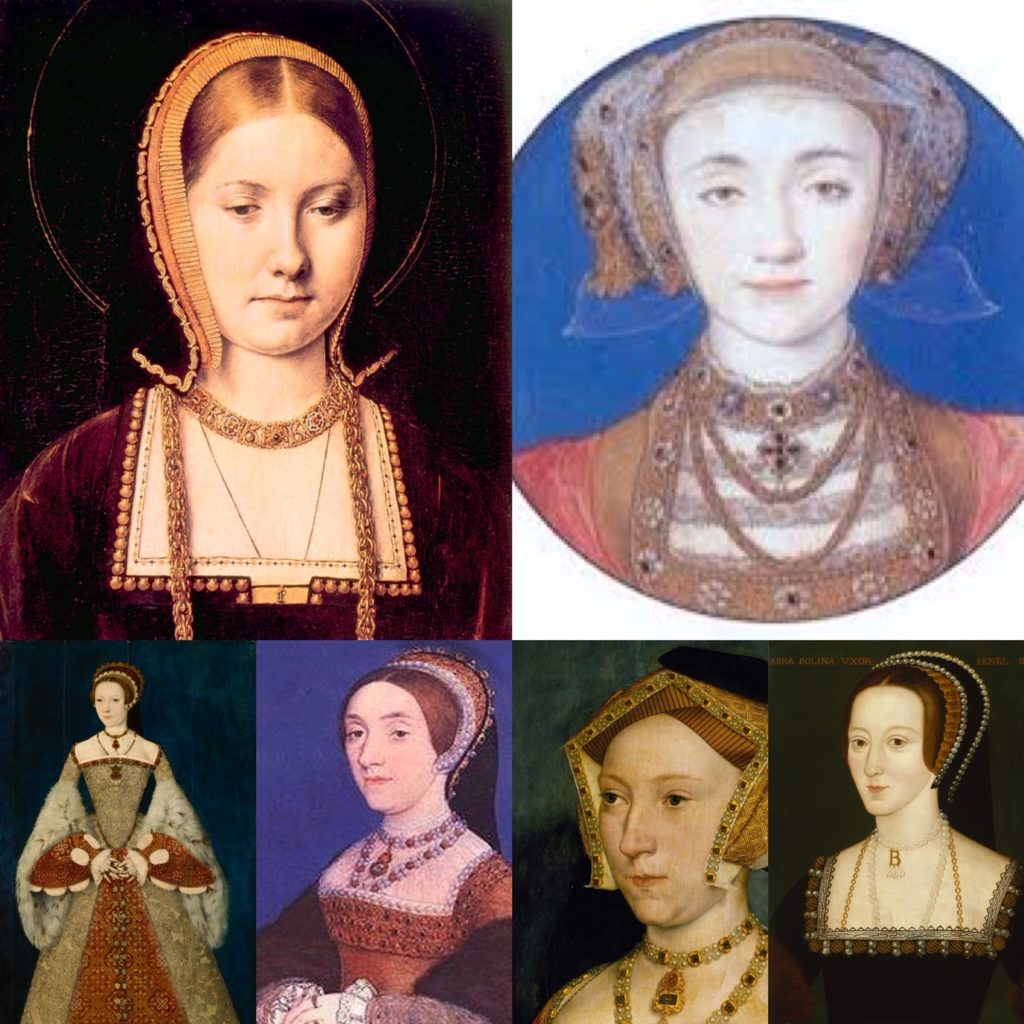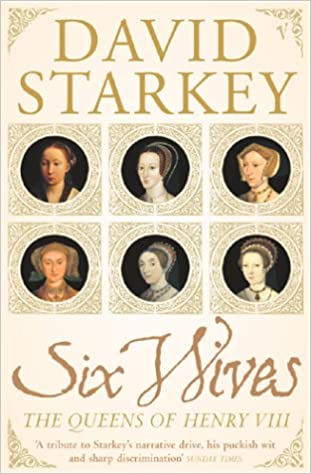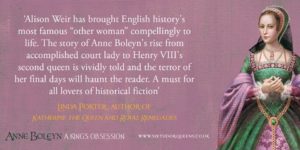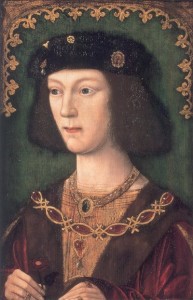As a groom, Henry’s personal desirability decline dramatically during his life.
Katherine of Aragon happily married the most handsome prince in Europe. Katherine Parr reluctantly shared the bed of a morbidly obese tyrant.
But in truth, that hardly mattered. Throughout his reign, Henry’s principal offer to a bride never wavered. Marriage to him meant maximum promotion. The Queen was the first lady of the land. In Henrican England, a woman could rise no higher.
After marriage, each of Henry’s wives enjoyed the same exalted status. But their starting points differed wildly.

How prestigious was the background of each of the six Tudor Queens? How would their status have been regarded by contemporaries? What would each of their marriage prospects have been had Henry failed to show an interest?
It’s a fascinating question. So, like all supercool people, I’ve conducted a little analysis. Here’s my stab at a pecking order.
1. Katherine of Aragon
Few could doubt that Henry’s first Queen should top the list. The daughter of the ‘Spanish Kings’ had a thoroughly royal pedigree and was related to many of Europe’s crowned heads. Through her great-grandmother, Catherine of Lancaster, she was even descended from England’s very own Edward III.
Katherine was always destined for a crown. Her parents successfully married off their many daughters to secure foreign alliances. In hindsight, it’s almost a tragedy that she didn’t end up elsewhere. She was certainly unlucky with both her English husbands.
2. Anne of Cleves
The heritage of Anne (or Anna) of Cleves is one I’d always failed to appreciate. I had casually dismissed her as the daughter of a minor German state. It wasn’t until I read the great biography by Elizabeth Norton that I realised how wrong I was. Anna’s genealogy included kings of France. She had connections to Burgundy. She was a descendent of Edward I of England.
Had Anne not come to England she would most likely have married within the Holy Roman Empire. A life as a German duchess could well have been on the cards. Through a union with Henry however, she achieved a crown. Even if only for a very brief period.

3. Anne Boleyn
It is often said that the Boleyn’s had ‘come up’ only recently by the time Anne was one the scene. That’s partly true. But Anne was granddaughter of the duke of Norfolk. She also claimed noble heritage through her father’s side.
Three out of Anne’s four grandparents could claim to be from the nobility. Or at least, the very upper reaches of the gentry. Like all Henry’s wives, she could claim descent from Edward I.
Long before Henry ever seemed like a possibility, Anne looked set to make a great match. Her attempts to wed Henry Percy, Earl of Northumberland were rebuffed. This, though, was not due to her heritage. The powerful Cardinal Wolsey intended her to marry her kinsman the Earl of Ormond to satisfy competing claims to the title. Percy certainly robustly protested that Anne was of good enough pedigree to become countess of Northumberland. It’s likely that, left to her own devises, she would have made a similar match.
Some speculate that Anne’s father, Thomas Boleyn was only raised to the peerage as Viscount Rochford and later Earl of Wiltshire because of his daughters’ ‘involvement’ with the king. In reality, his promotion to Viscount Rochford was almost certainly due to his heritage. The fact that Mary Boleyn may or may not have been the king’s mistress at this point is likely to be a coincidence.
Thomas might well have achieved an earldom even if Anne hadn’t caught the king’s eye. He did, to be frank, deserve compensation. Despite being (probably) the best candidate, he missed out on the earldom of Ormond.
4. Katheryn Howard
This list contains two controversial calls. The first is my decision to place Anne Boleyn ahead of her first-cousin Katheryn Howard.
Katheryn was a male-line descendent of the Duke of Norfolk. Her ancestry was impeccably noble and gentry on both sides. Anne was contaminated by a line which had so recently emerged from the merchant class. Katheryn was not. Through her mother’s line she could claim descent from some highly respectable baronial names. Clifford, Ferres and Beauchamp each get a name check on her family tree.
But how one’s social standing was perceived in Tudor England is difficult to judge. Particularly from this distance. As such, I’ve placed a great deal of emphasis on how likely each Queen would have been to ‘marry well’ before Henry was in the picture.
Anne was almost certainly destined for a coronet. Katheryn seemed more likely to make a modest match. Blood was important in the sixteenth century. But even then, blood wasn’t everything. Connections were powerful. The right people pushing you could make a difference.
A big part of Anne’s desirability might have been the money that Thomas Boleyn could offer as a dowry. Katheryn was from a mighty family. But her lowly position within it meant that she had little cash to bring to the table.
5. Katherine Parr
Henry’s last wife was of solidly knightly class. Her father was a significant landowner. She could claim descent from the mighty Nevilles – the family that had dominated the north in the 1400s. A descendant of Edward III through the Beaufort line, Katherine had a heritage to be proud of.
Henry VIII was Katherine’s third husband. She had already proven her worth on the marriage market. Her first marriage had been respectable. Her second, spectacular.

6. Jane Seymour
Jane may have been the Queen that lingered in Henry’s heart. But she was probably the humblest. I mentioned that this list contains two controversies. My decision to place Jane below Katherine Parr is the second. You could argue that there’s barely a sheet of tissue paper between them. Through her mother’s Wentworth line, Jane, like Katherine, could claim descent from Edward III.
Maybe it’s a tie. But to my eye the Parr family tree seems to more obviously resemble a family on the fringes of the baronage. As I said earlier, I’ve placed a lot of weight on the ‘pre-Henry’ marriage prospects of the ladies. Katherine was snapped up young and made two decent marriages. At 28, Jane was somewhat on the shelf. She seemed to be struggling to make a decent match.
Over to you geeks. What do you think? Have I been a bit harsh on Jane or Katheryn Howard? Are there important branches to the family tree I’m missing? I want to know what YOU think.
Subscribe to our newsletter!














